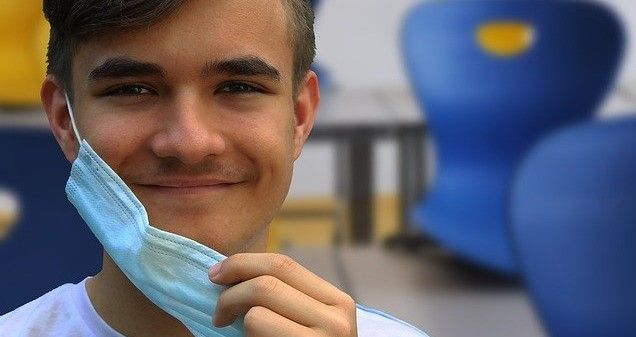Face masks and coverings are now a standard piece of clothing.
In fact, so many people have become accustomed to wearing them that it is likely that they will still be worn to combat the flu and common cold even after the successful deployment of any vaccine.
However, the biggest issue with face masks is that viruses and bacteria adhere to the material and can then easily be passed on when the wearer touches the cloth.

To solve this problem requires a textile which could kill the virus on contact.
It is a problem that now has a solution, as a team of researchers from University of California, Davis, have developed a cotton fabric that releases reactive oxygen species (ROS) when exposed to daylight, killing any microbes attached to it.
An outline of how the textile gained its powers is explained in the university press release, which states how, “The researchers made their antimicrobial fabrics by attaching positively charged chains of 2-diethylaminoethyl chloride (DEAE-Cl) to ordinary cotton. Then, they dyed the modified cotton in a solution of a negatively charged photosensitizer (a compound that releases ROS upon exposure to light), which attached to the DEAE chains by strong electrostatic interactions.”

The result is a textile that kills viruses and bacteria when exposed to direct sunlight for one hour. Artificial or indirect light is also effective but requires a longer time frame.
Specifically the team found that, “… a fabric made with a dye called rose Bengal as the photosensitizer killed 99.9999% of bacteria added to the fabric within 60 minutes of daylight exposure and inactivated 99.9999% of T7 bacteriophage –– a virus thought to be more resistant to ROS than some coronaviruses –– within 30 minutes.”
The textile is also practical for real world use, as it is harmless for the wearer, washable (having been found still potent after 10 handwashes), and reusable like any other cotton material. Additionally, even after being left in the sun for 7 days the cloth still maintained its pathogen destroying ability.
The results have now been published in the journal Applied Materials and Interfaces, where the researchers report that, “The photo-induced fabrics (PIFs) achieved 99.9999% reductions against bacteria and the bacteriophage within 60 min of daylight exposure. Moreover, the PIFs showcase excellent washability and photostability, making them ideal materials for reusable face masks and protective suits with improved biological protections compared with traditional PPE.”

However, a fabric that kills pathogens on contact is not actually a new discovery, as an alternative breakthrough has already been made in the Czech Republic using nanotechnology.
The nanomaterial advance was made by embedding nanoparticles of copper, zinc, silver, gold, and cerium directly into a textile’s fibres. Doing so can turn any piece of cloth, either synthetic or natural, into a highly effective killer of pathogens.
“Together with Czech manufacturers,” explains Igor Sevcenko, the founder and CEO of AG CHEMI GROUP which is heading the project, “we have developed nano technologies than can produce fabrics with active bactericidal effects, destroying 99.99% of all known bacteria and viruses.”
Called NANO AB PC-22, the novel nanotextile is washable and durable and has already been proven effective at killing 850 different species of pathogen.

Furthermore, as the process can be applied to a near limitless list of fabrics, almost anything made of cloth can be given antiviral and antibacterial powers. Gloves, masks, chefs’ hats, waiters’ aprons, tablecloths, nurses’ uniforms, hospital bed linen, pillows, sofas, surgical gowns and more, all could become deadly killers to germs and bugs, keeping us safer from infection.
While these have been challenging times, the scientific and business worlds often see problems as opportunities to change the world for the better. Turning the COVID catastrophe into the inspiration for solutions to defeat not only coronavirus, but also the flu, superbug infections, and the common cold.
Sunlight and nanoparticles may not be the first ingredients to mind when trying to make safer face masks, but it seems that they may be the raw materials we need to stay healthy.
Photo credit: AG CHEMI GROUP, Applied Materials and Interfaces, Eduardo RS from Pixabay, Gerd Altmann from Pixabay, & Alexandra_Koch from Pixabay